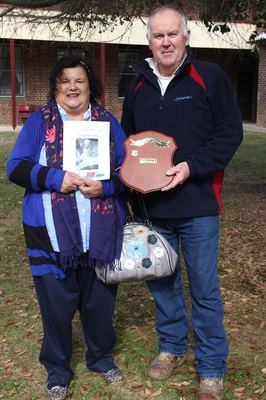SHEARING results of the merino wethers on the Northern Tablelands wether trial have been analysed and distributed.
The four-year wether trial allows local breeders to benchmark the performance of their flocks against others in the district on an annual basis.
Twenty-five local landholders each supplied 10 merino wethers to the trial when it was established.
Landholders and industry representatives from across the region gathered last week at the NSWDPI Agriculture and Advisory Research Station in Glen Innes to compare the results.
Producers and industry representatives were also there to find out who would win the Paul ‘Beaver’ Lennon Memorial Shield for the most successful wethers on a $/DSE basis from the 2014 shearing.
Congratulations went to Charles Capel, ‘Kirkcowan’, Deepwater, who first joined the wether trial in 2003 after moving to the Deepwater district from Burren Junction west of Narrabri.
“When we moved to Deepwater we brought our nucleus flock with us.
“We have consistently used a different type of ram to give us a bit more length and density in the wool.
“We had a 22 micron wether in the trial in 2003 and have culled through to an average of 18-19.5 micron in the 2014 trial.
“Being involved in the wether trial has helped me with this selection process.”
Jim Meckiff, Allflex Sheep Business Manager, delivered a presentation on precision sheep management using the data (fleece weight, micron and body weight) that was captured at the December 2014 wether trial shearing to demonstrate the use of selection indices and how well they describe total fleece value.
“There is a real opportunity for commercial breeders to use this technology to select or manage their own flocks,” Mr Meckiff said.
Brent McLeod, Northern Tablelands Local Land Services Livestock Officer – Sheep, is an active collaborator in the Northern Tablelands wether trial.
“The trial is an excellent decision-making tool for producers to compare how different blood lines can affect the profitability of their wool enterprise.
“It also allows producers to benchmark their performance against other entrants throughout the region,” Mr McLeod said.







